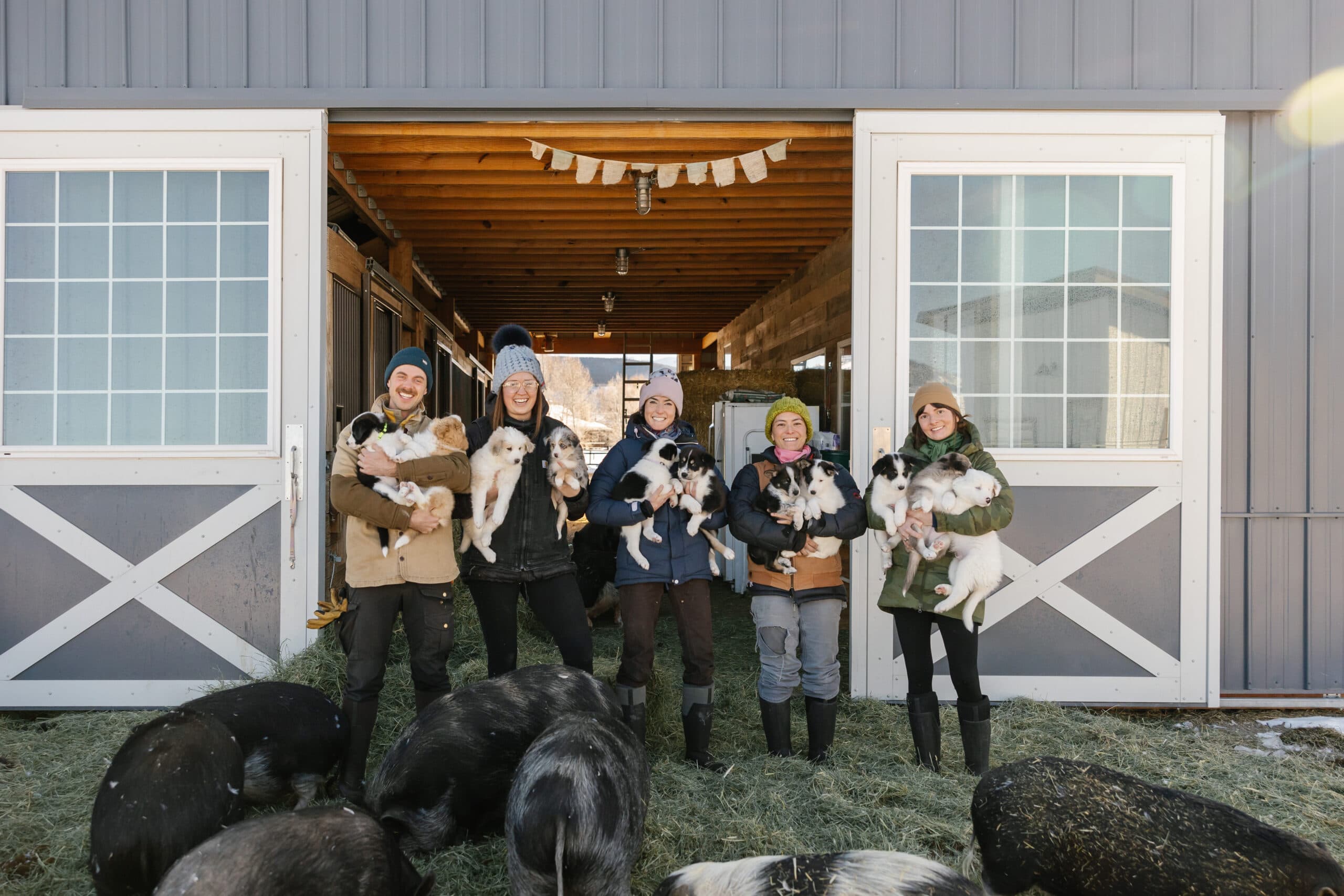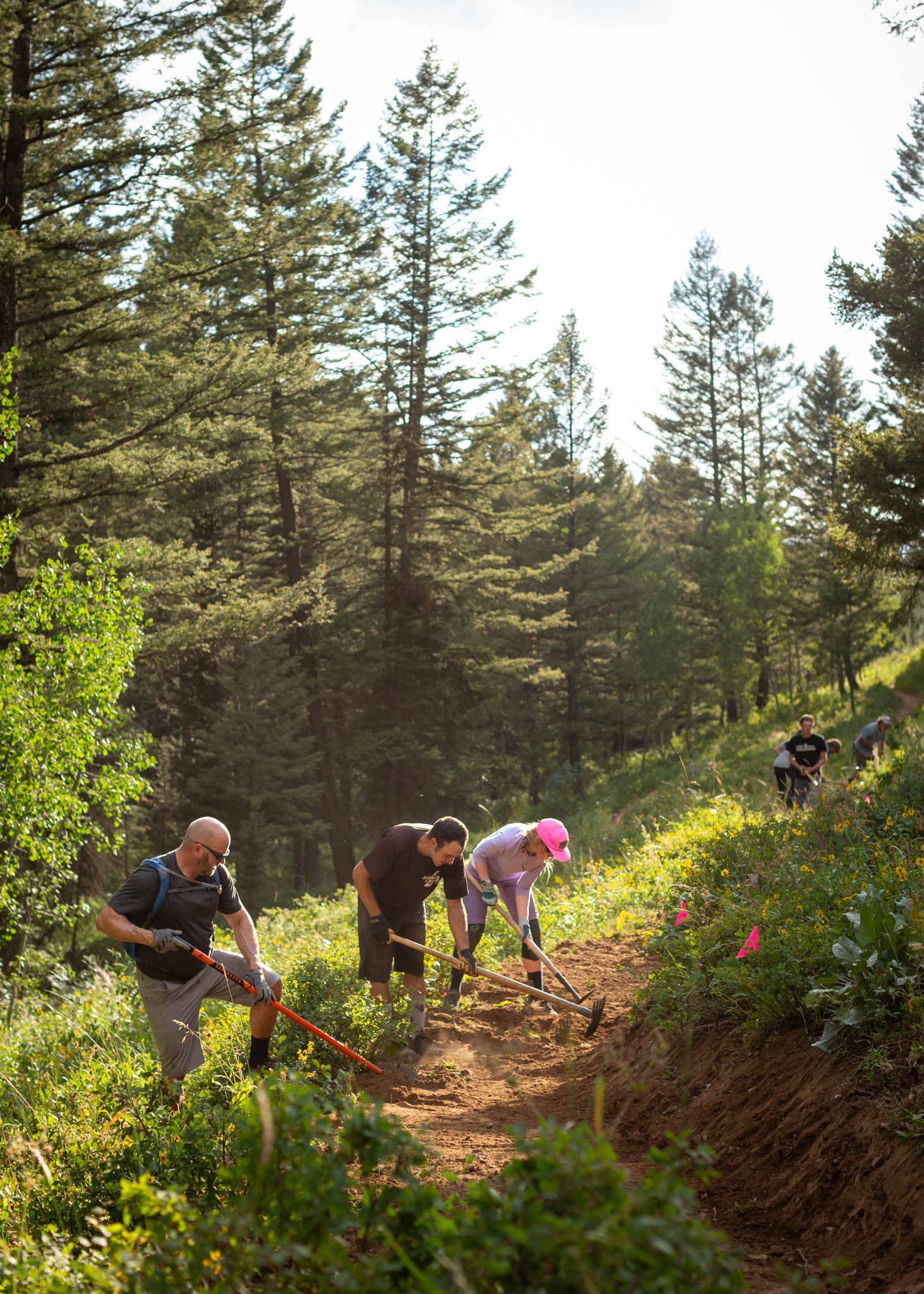Lost and Found
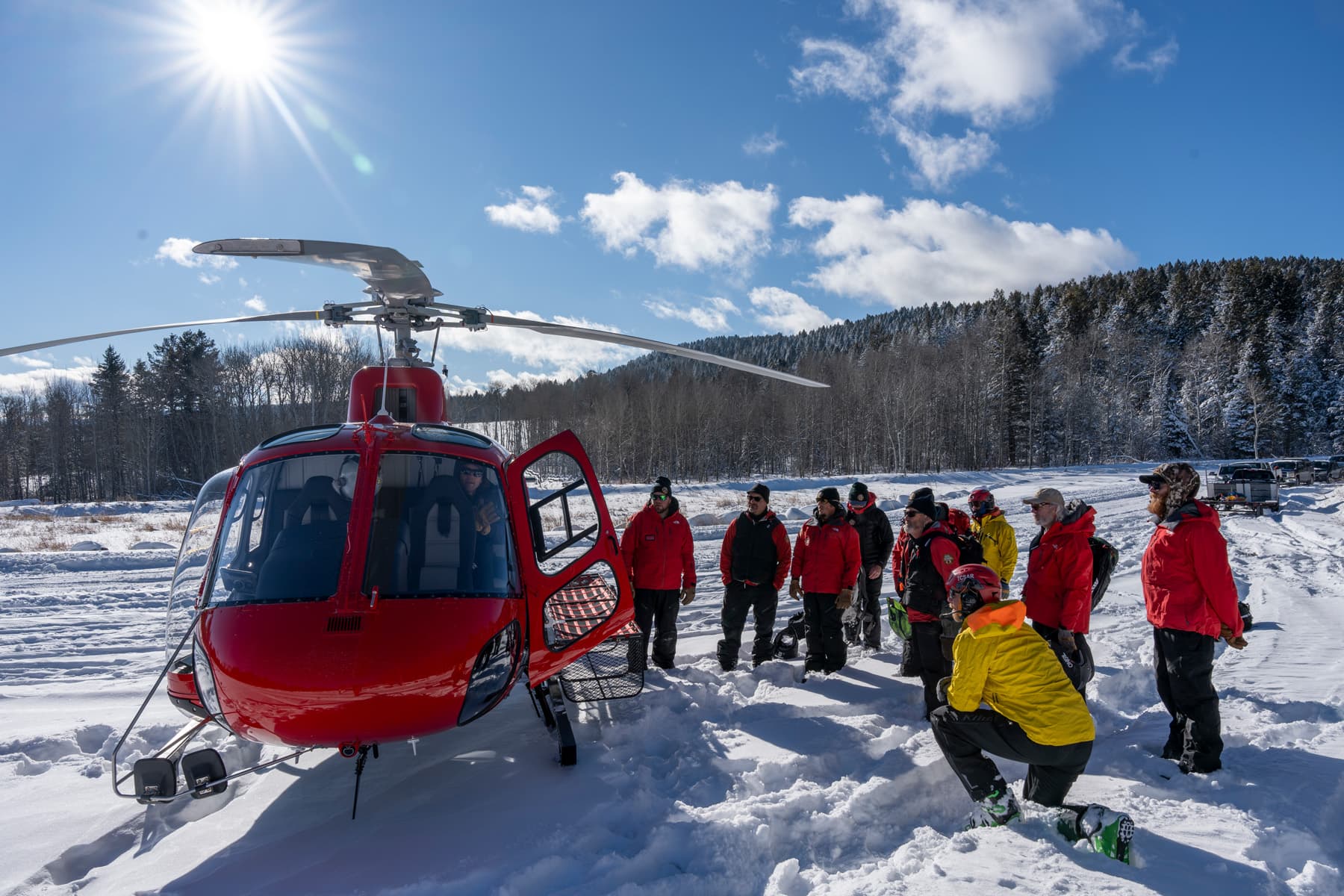
No one plans for disaster when they head out for an adventure. No one intends to get hurt or lost.
But then a rock moves. You fall the wrong way. Your snow machine gets stuck, you run out of gas, crash on your bike, or get caught in an avalanche. Suddenly your fun day in the mountains turns into something different. Suddenly you need help.
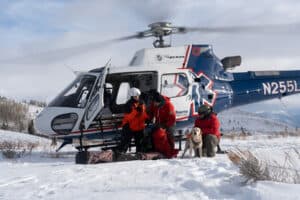
Humans have come to the rescue of others in distress probably for as long as we’ve existed. It’s part of our DNA. Organized search and rescue (SAR) teams began showing up hundreds of years ago. One of the earliest records of this type of effort surrounds Bernard of Menthon, a Swiss monk who in the year 962 established a monastery in the Alps at 8,000 feet above sea level. The monastery was located along a busy, but treacherous, pass connecting France, Switzerland, and Italy—a pass along which travelers often got lost or injured, especially in the winter—and the monks began providing shelter and aid to help people on their journeys.
By the time Bernard was canonized in 1681, the monastery he’d founded had begun keeping dogs to help carry out rescue missions. Those Saint Bernards—the name of the breed became official in 1880—were bred for the Alps’ harsh weather conditions and are known for their keen sense of smell and hearing, which makes them excellent search dogs. They’ve been credited with rescuing more than 2,500 people in the Alps over the years, and are famous for the barrel of brandy they carried around their necks to provide a warming drink to the cold, destitute travelers they found. (These days the brandy has been replaced by coffee.)
The Tetons have their own rich history of rescues, although none of those stories involve barrels of brandy. In November 1950, four men, including Exum Mountain Guides co-founder and National Outdoor Leadership School founder Paul Petzoldt, climbed to the site of a plane crash on the side of Mount Moran to search for survivors. Unfortunately, all twenty-one people on board the plane had perished, but the rescuers’ dark, cold ascent in hopes of providing assistance has lived on in Teton lore. In 1967, a team of seven rescued an injured climber and his partner off the North Face of the Grand Teton. That rescue, which became known as the Grand Rescue, took three days due to the technical nature required to get the patient off the peak to level ground where he could be picked up and flown out. In 2003, six climbers were hit by lightning on the Grand Teton, requiring an intricate helicopter evacuation.
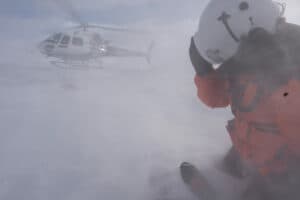
But these are just some of the most famous—or infamous—Teton rescues. More commonly, the people who need assistance have a lower leg injury that keeps them from walking out or they get disoriented and end up benighted without proper gear. Regardless, given the thousands of people who venture into the backcountry to recreate on either side of the border between Idaho and Wyoming, a few are going to get into trouble. It’s just the odds when you have that many visitors traveling through rugged terrain. So, on both sides of the Tetons, search and rescue teams are on call to help people when their plans go awry.
The Teton County Idaho Search and Rescue (SAR) team consists of roughly thirty volunteers who are on call 365 days a year, 24 hours a day. The team trains twice a month—practicing everything from swiftwater to avalanche to high-angle rescue in those training sessions—to ensure they are ready and prepared to respond at a moment’s notice to help people in need.
“I lost a son on the South Fork of the Snake River,” says Ron Razzolini, who has been part of Teton County Idaho SAR since 2018. “The Bonneville County SAR team was able to recover his body. That meant a lot to me.” Currently, Ron is the director and lead advisor for the operations team and serves on the SAR Foundation’s board. “A SAR team doesn’t [always] bring someone back, but their efforts help with healing,” he says. “They helped me, and I knew that someday I wanted to give back to my community in the same way.”
Ron says he thinks that over time outdoor recreationists have become more educated and aware of potential risks in the backcountry. Avalanche reports are broadcast on the radio every morning throughout the winter. Avalanche workshops are hosted on both sides of Teton Pass at the start of the snow season. You can take classes locally on everything from rock climbing techniques to first aid, avalanche rescue, and what to carry in your pack, all to ensure you have the proper training you need to plan and execute your own adventure. Which means there’s no excuse for people to go out into the wild unprepared. But still, it happens. And bad luck happens. For those times, it’s invaluable to have a trained team of rescuers to come to your aid.
“I was young once,” Ron says. “I’ve done less-than intelligent things in my life. For instance, eons ago, someone told me I could go out a side gate at a resort in Utah and find untracked powder. So off we went. We had no clue about avalanches or proper gear. We all take risks. Sometimes we get away with them, sometimes we don’t.”
It’s when we don’t get away with things that Teton County Idaho SAR steps in.
“It’s good to take care of your own mess, and there are tons of incidents where people get out on their own,” says Don Sharaf, who has been part of Teton County Idaho SAR since 2018. He is an avalanche professional and is currently the training advisor. “But our goal is to be a resource when those things fail. We are very happy to help people if they are hurt or lost. We are there when you run out of options. We want people to know they have another resource and that is our SAR team. We want to help.”
The team has evolved over the years, becoming more balanced and varied in its skills, expertise, and personnel. The incoming class of volunteers includes two emergency room physicians. Other team members are whitewater kayakers, climbers, mountain guides, and snow machiners. They bring their own experience to the team, and then train together extensively to keep themselves current and to add new skills to their repertoire.
“Part of our goal is to let people know the resources and training we have,” says Emily Bahr, who joined the team in 2021 and is currently the membership advisor. “Sometimes looking out for an injured friend can add complications. Sometimes it’s better to call us for help.”
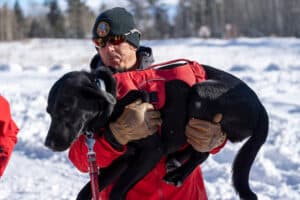
Complications include emotional stress, which can affect anyone involved in a rescue, whether it’s the victim, their friends, or the first responders. Awareness of the impact of this kind of stress has grown in recent years. Doug Van Houten, who is on the SAR teams in both Teton County, Idaho, and Teton County, Wyoming, and has been part of search and rescue since 2007, says training for psychological first aid has become a priority for both teams.
“It’s easy to train to put on a band-aid or make a splint,” Doug says. “But fatalities and traumatic injuries are different. … The hardest thing for me has been dealing with the family of the deceased. But we have more awareness now, more capability, training, and tools to handle things with tact and sensitivity.”
And that tact and sensitivity extends to the SAR team. Emily Bahr says part of their normal conversation before responding to a call is to check in with every member of the team to see how they are doing.
“We use a stop light system before we go out,” Emily says. “Green light, I’m great, I can go. Yellow light, I’m not at my peak, and red, I’m not field ready. I can mark maps and go get pizza, but I can’t go on the mission. There’s a significant amount of research showing that someone who is not at peak mental health is more susceptible to trauma. We know that now, and we don’t want to put anyone [else] at risk.”
Teton County, Wyoming, SAR gets as many as one hundred and twenty call-outs a year, while the Idaho team averages between twelve and twenty missions in that same time frame. Don says there are positives and negatives to their low volume of calls. They don’t tend to get burnt out and they suffer less stress, but they also garner less hands-on experience.
“Volume equals experience, and generally with experience, competency and professionalism follow,” he says. “You can train all you want, but you learn so much more from a mission. That’s why we take time to write up and share lessons learned from all our outings.”
Idaho’s low call-out volume is due to several factors, including the location of state lines and county boundaries. Teton Valley itself is a relatively small area, and the Teton Range and much of the Big Hole Mountains lie in other SAR jurisdictions. However, often Teton Valley responders can get to a scene quickest, so they have agreements with SAR teams in Bonneville and Madison Counties in Idaho, and Teton County in Wyoming, to work together and provide support when it makes sense. All teams use the formalized Incident Command System, which grew out of wildland fire management and gives structure to a rescue response by defining roles and responsibilities. Those definitions make it easier for different teams to coordinate their response even when they haven’t trained together.
The other reason Doug van Houten thinks Idaho sees fewer accidents has to do with the nature of the trails and recreational opportunities found around the valley. The most heavily used backcountry ski—and avalanche—terrain nearby is in Wyoming, and the most dangerous downhill bike trails are in Wyoming as well. Most snowmachine traffic is in Bonneville County. The most challenging whitewater rivers also lie outside of Teton Valley.
Teton Valley, on the other hand, is known for its moderate cross-country mountain bike trails and rolling, less avalanche-prone ski terrain. But that doesn’t mean the county has no avalanche terrain. In the winter of 2024, one of Teton County, Idaho’s biggest rescue missions involved a skier who’d been caught in a slide just west of the Wyoming state line in Idaho.
“Three weeks after that avalanche, the guy who was caught came to one of our fundraising nights,” Ron says. “It gives me goosebumps when things like that happen. That’s what we want.”
SAR, however, continues to see the need in Teton Valley grow. “We are ramping up the efforts from when I first joined the team,” Ron says. “Part of that is because of the growth we are seeing in the valley. We are on track to run three times as many calls as we did when I first joined in 2018.”
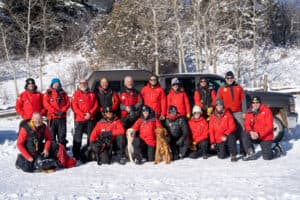
SAR has seen an increase in snowmachine calls, particularly late arrivals for recreators, and notes the bigger motorized population on the Idaho side compared to Jackson, a number that increased during the years around COVID.
“The number of people moving here has increased the number of recreators and in some cases novice recreators,” says Gina Stinson, executive director of the Teton County Idaho Search and Rescue Foundation. “People are excited to get out and do things in a new area without necessarily having the years of training that goes behind that. Everyone should get out there and be recreating, but with that comes personal responsibility to have the right training, ask questions, get the right gear, get beta, and ask local shops.”
A few years back, Teton County Idaho SAR started a separate nonprofit foundation to handle fundraising, community outreach, engagement, and advocacy, as well as to absorb as many of the administrative duties associated with fundraising and outreach as possible. The goal of that separation was to allow the SAR team to focus on operations and training.
“A portion of our annual operation budget comes from the county,” Ron says. “But 80 to 85 percent comes from donations and fundraising. Tin Cup is our biggest financial supporter, and a number of businesses in the valley also help. Most recently, the story slam group [Valley Voices] reached out and said they wanted to feature us, which was awesome. We also have a handful of grants for equipment and training. Everything helps.”
The team is upping the number of community events and trainings it sponsors. SAR members have gone into local schools to introduce kids to some basic backcountry essentials, like what to carry in their packs and how to deal with hypothermia. Educational events are also held at local businesses throughout the valley to raise awareness.
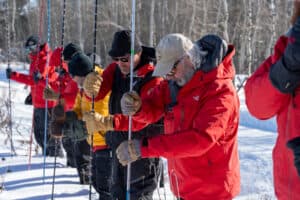
“The foundation allows the operations team to focus on rescues and training without being spread too thin because they are all volunteers,” Gina says. “Everything they do is extra, and it requires a lot of training. The foundation focuses on finding the funding and writing the grants, connecting with the community, and keeping our presence known.”
As SAR grows, Gina and team are focusing more on education and adding resources for the community, like scholarships for outdoor education courses and programs for students. “Presence in the community and education add to the prevention layer,” she says. “This helps the operation team by hopefully limiting the number of people that need help—if we can educate [folks] on how to recreate safely.”
And awareness is one of the key ways people can stay safe or know how to get help.
“People should always feel like they can call for help when they need help,” Don says. “We want to encourage that. And there are also things people can do to help us and help themselves. Tell people where you are going. Have a very clear picture of the weather forecast and the avalanche forecast. Choose your partners wisely. Know how to find the coordinates for your location on whatever navigation device you are using.
“And go on your own terms, not what Instagram tells you [to do],” he says. “Outdoor recreation is not a competition, or it shouldn’t be.”
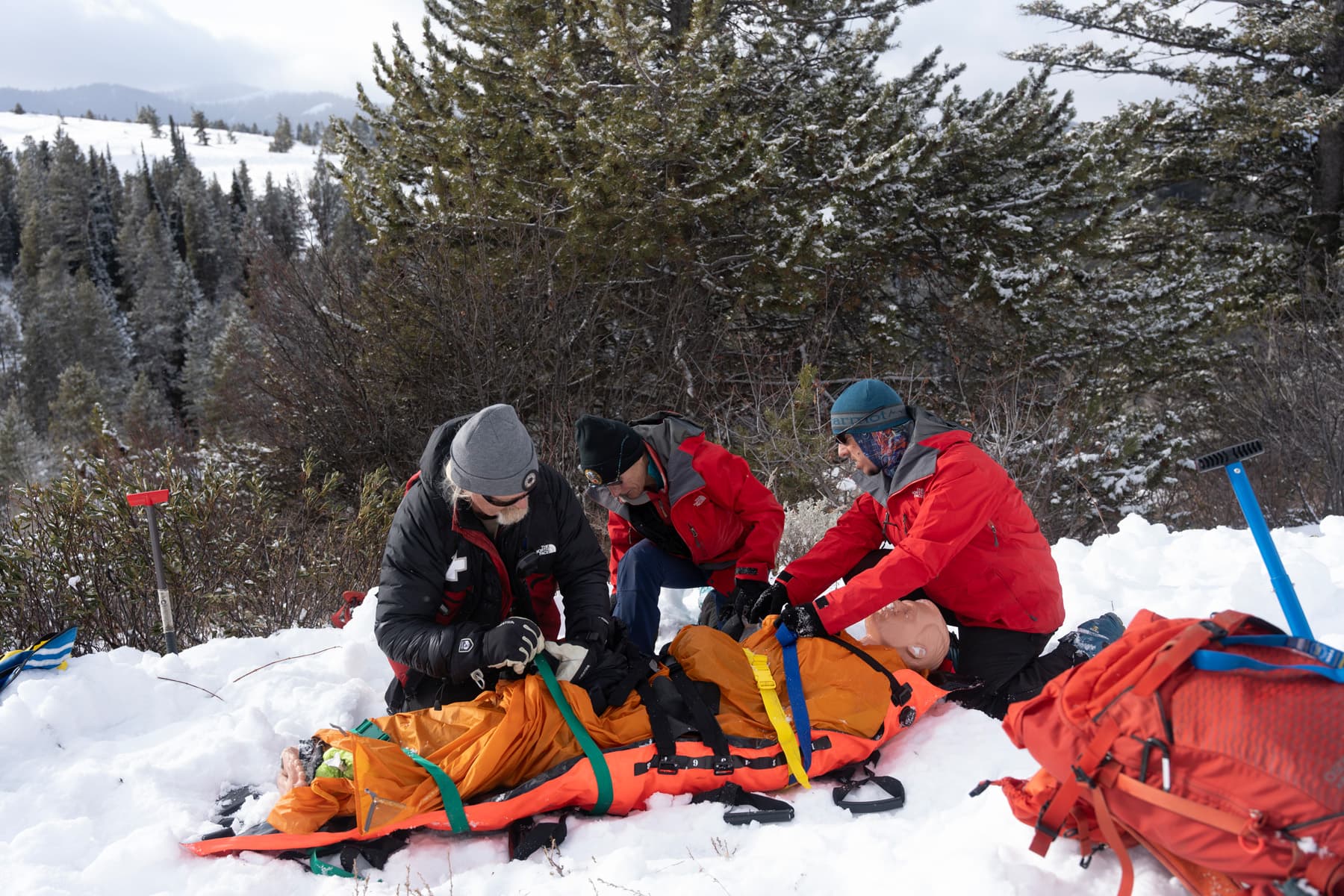
Teton County, Idaho, Search and Rescue training on Piney Pas.
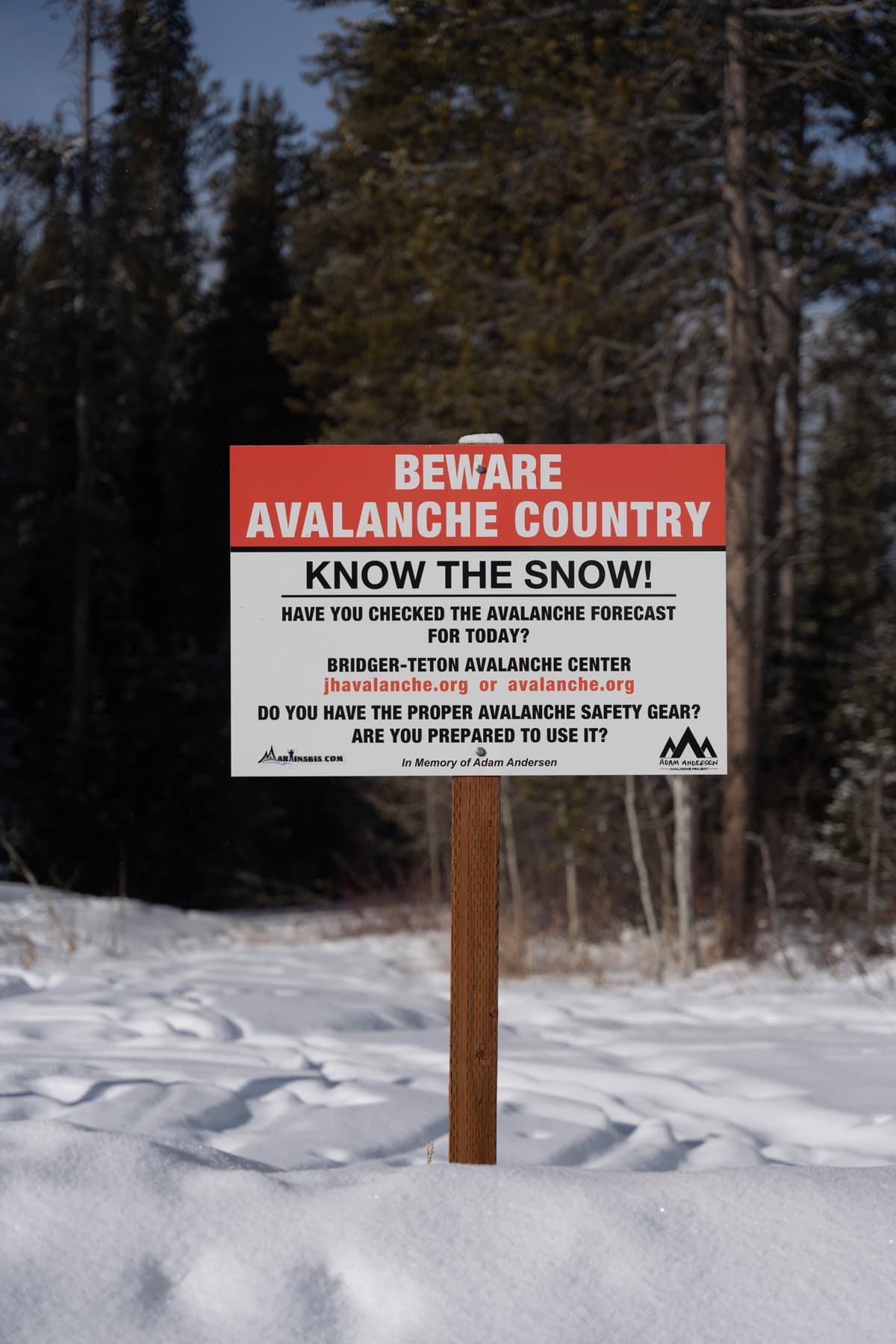
Teton County, Idaho, Search and Rescue training on Piney Pas.
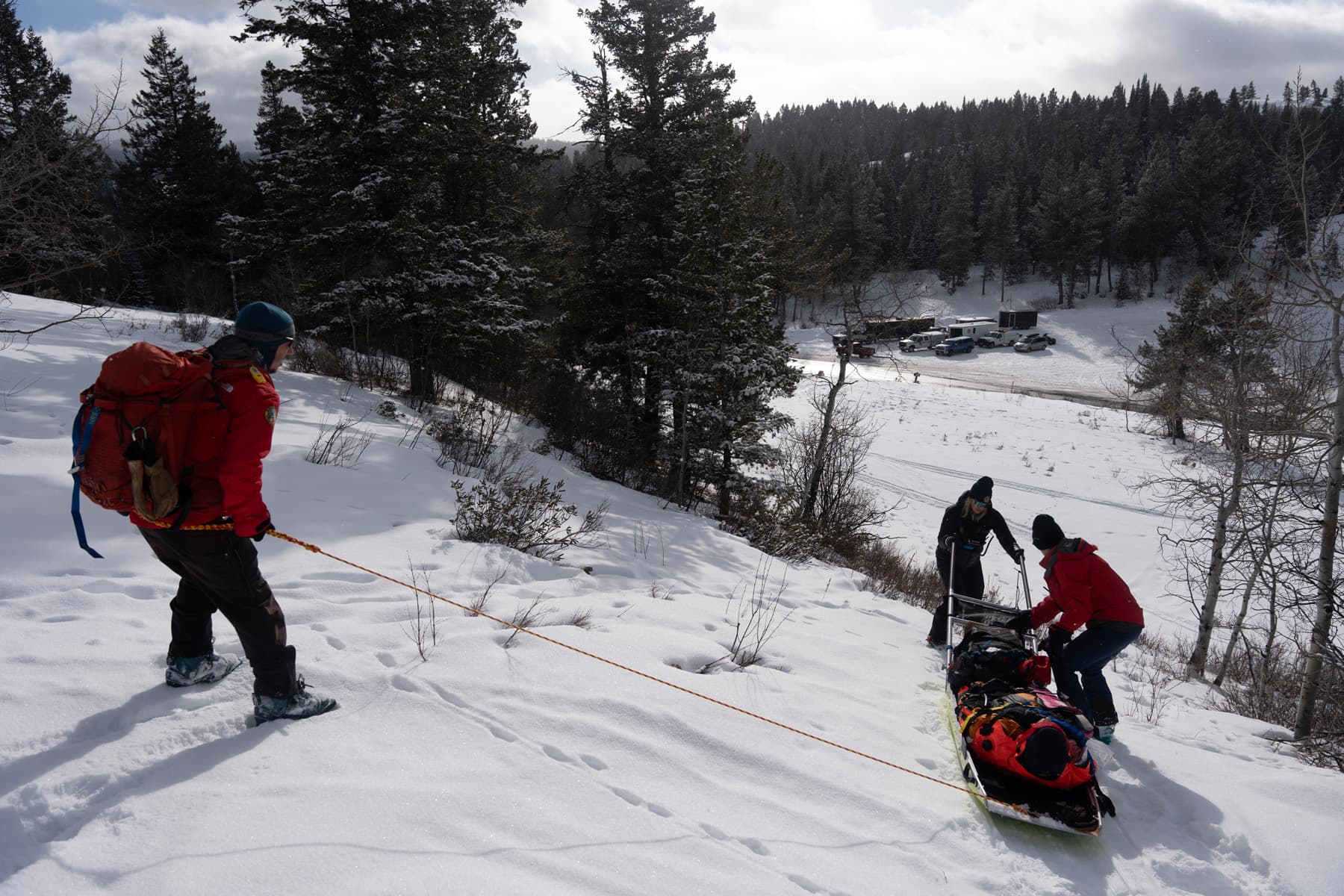
Teton County, Idaho, Search and Rescue training on Piney Pas.
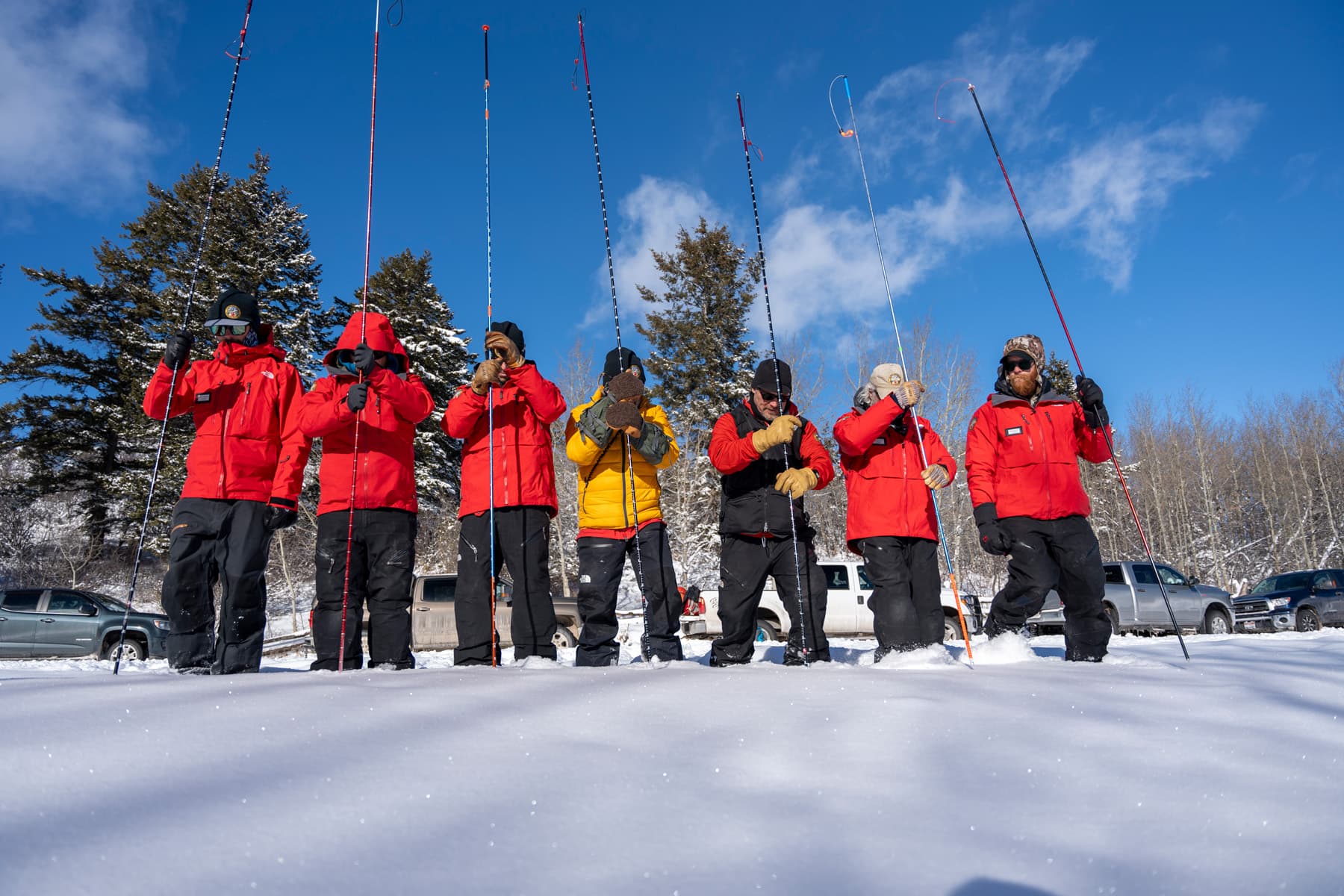
Teton County, Idaho, Search and Rescue training

